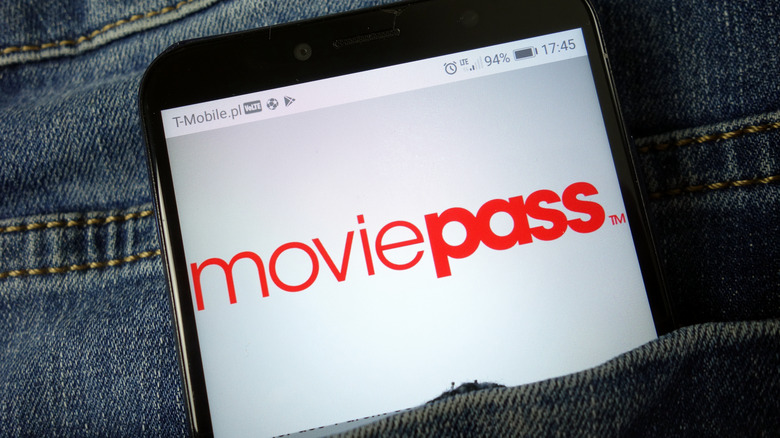The Reason MoviePass Was Such A Failure
On paper, the idea behind MoviePass looked fantastic: for a set monthly fee, subscribers could attend as many movies as they wanted. Yet, despite its massive popularity, the platform eventually imploded. Subscriptions have proven to be a lucrative business model, generally speaking; they've been creeping up everywhere from video streaming services to automobile manufacturers, so how did MoviePass blow it?
It would be too easy to blame MoviePass's epic failure on mismanagement. The company's botched rollout failed to include every major Hollywood studio, and a hackneyed last-minute attempt at recovery dropped the subscription fee from its original $50 per month to $10 per month. Both fumbles contributed to the company's eventual fall, but neither would've necessarily sunk MoviePass on its own.
You can't even really blame the odd way the program worked at one point — when you signed up for MoviePass, you'd get a debit card sent to you in the mail, which you'd then use to buy a full-priced ticket to attend a movie showing. That turned out to be a rather ingenious way to circumvent the need for direct cooperation from the various film studios. The real reason MoviePass was such a failure may have been a factor no one at the company could've done anything to change.
Some things just don't work as a subscription
Subscriptions come in many varieties, from the kind you get with a print edition of a newspaper or magazine to the kind that allows you to use the facilities at a nearby gym. It's the latter of the two that MoviePass sought to emulate and what set the service down the path toward inevitable failure. Consider gym memberships: a successful gym sells more memberships than it could possibly accommodate if every single member visited the gym every single day.
Gyms, then, count on not everyone showing up every day — and some members not showing up at all. When a company earns money by having customers not using its product or service, that's called a breakage business model, and it was how MoviePass operated. Even early on, when MoviePass was priced at or near $50 per month, the financial success of the company depended more on how many customers didn't go see movies than how many did. However, when the subscription price plunged to $10 per month, MoviePass's reliance on inactive customers grew exponentially.
For MoviePass to turn a profit at that point, 89% of its customers would've had to attend fewer than five movies per year, according to one analysis. Instead, the average MoviePass subscriber attended more than two showings per month, which caused MoviePass to absolutely hemorrhage money. In other words, consumer demand to see movies vastly outpaced MoviePass's business model, dooming the company from the start.

